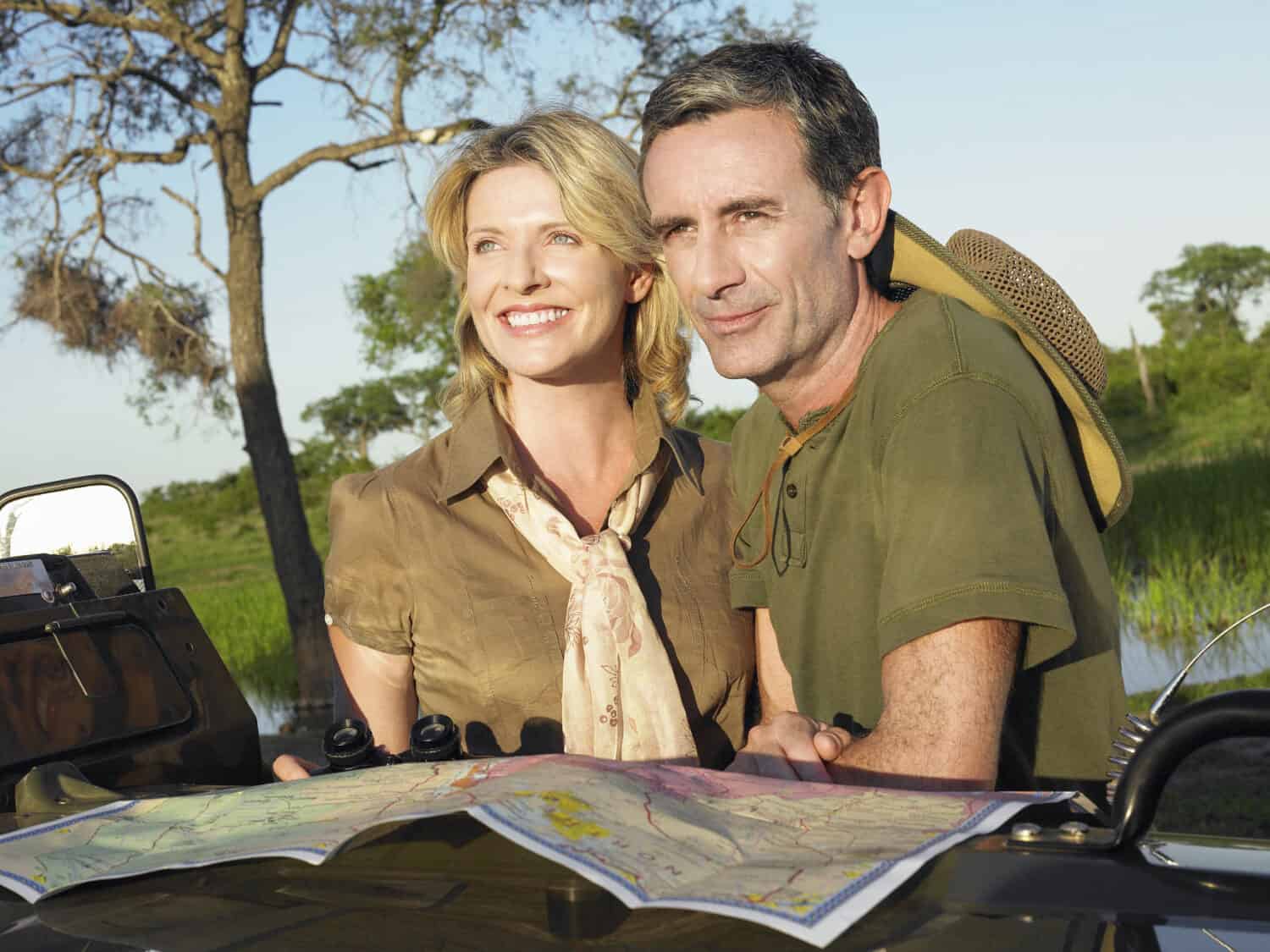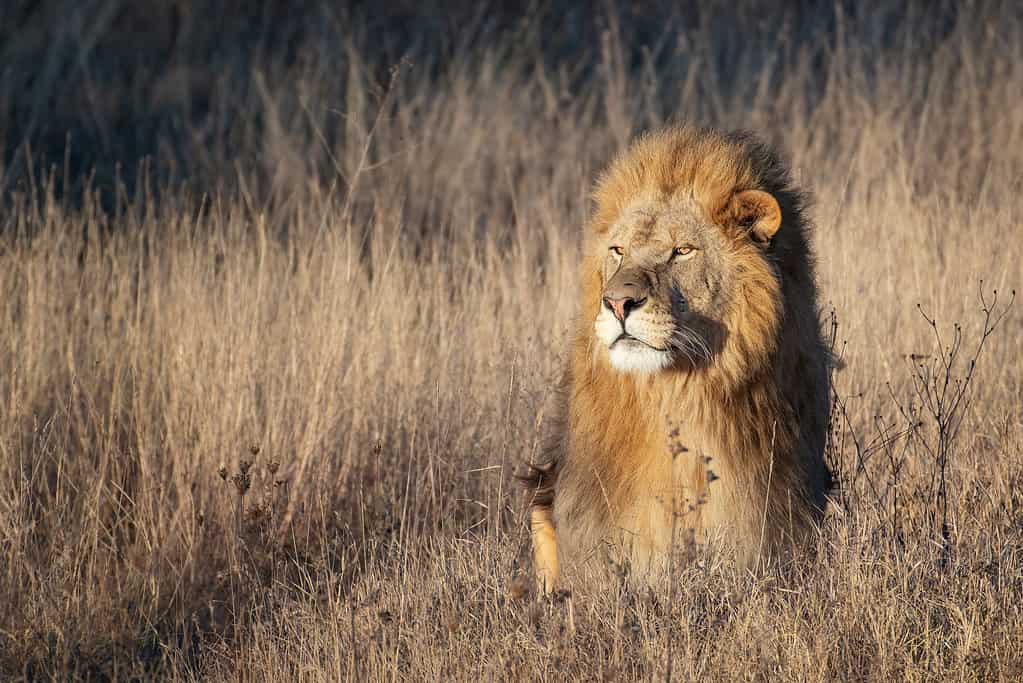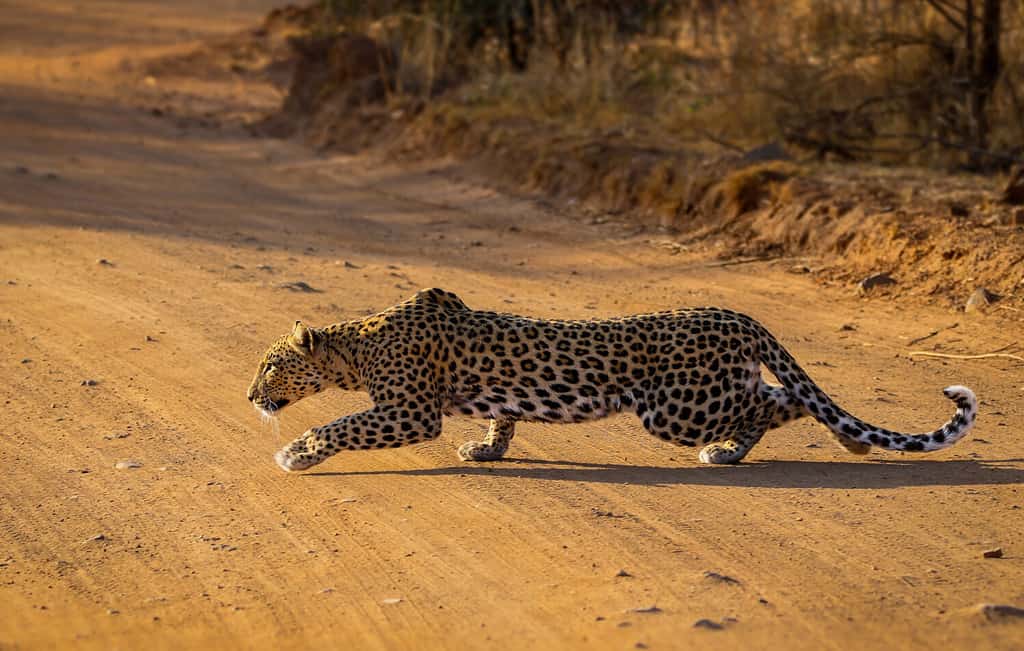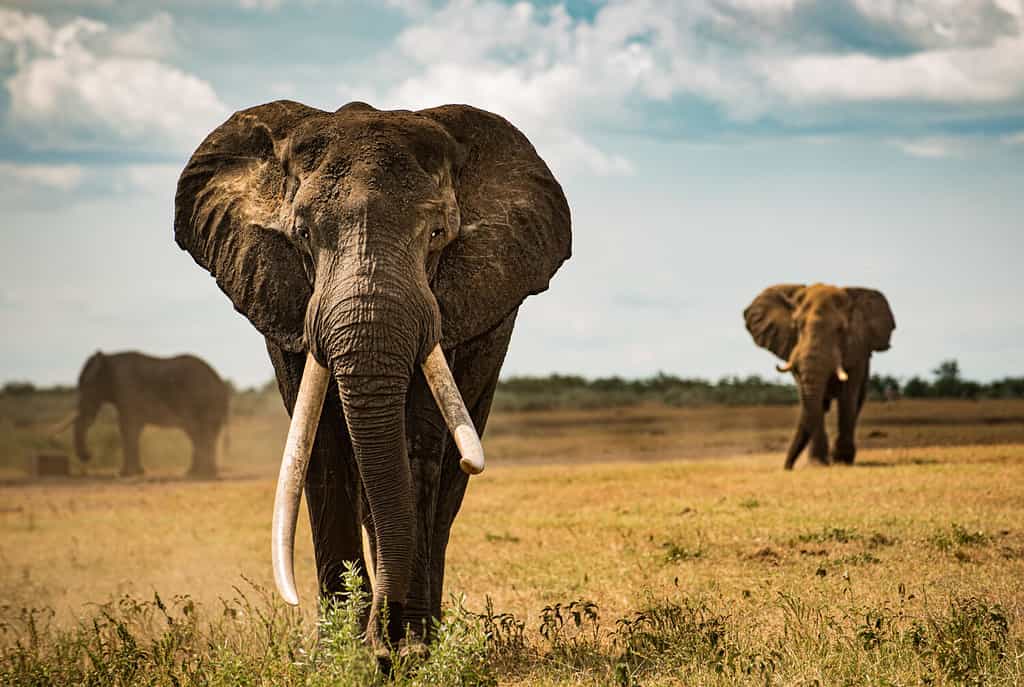Are you tired of the same old vacations every year? Perhaps a safari tour in the heart of South Africa is just the dose of adventure that you need!
The Kruger National Park is a large game reserve that includes a variety of wild animals. This park, located in South Africa, will give us sight to a variety of animals such as giraffes, wild dogs, hippopotami, cheetahs, impalas, zebra, antelope, African openbill, aardwolf, and more. If one of these animals has captured your attention, we think you’re on the right page.
To find out which adventure might be best for you, we need to do a little background on the Kruger National Park! Let’s take a look at where it’s located in South Africa, the history of how this national park started, amazing safari options, and then end on the big African five.
Location of the Kruger National Park

The Kruger National Park is located in Southern Africa.
©sirtravelalot/Shutterstock.com
Kruger National Park takes us around the world to South Africa. Well, it depends on how close you are to Africa! Perhaps it’s just a short trip, and you reading this article is a sign you should book the next flight over to see this national park!
The Kruger National Park is located in the Limpopo and Mpumalanga provinces. The ocean closest to these two provinces is the Indian Ocean. The Mpumalanga province is approximately 4,991 kilometers (3,101 miles) from the Indian Ocean. And the Limpopo province is about 5,156 kilometers (3,204 miles) away.
Now that you have your ticket booked and know where you are headed, let’s dig into the history of the Kruger National Park and see how it came to be!
History of the Kruger National Park

Kruger National Park was founded by Paul Kruger.
©Andrzej Kubik/Shutterstock.com
The Kruger National Park is no small park. This park is approximately 7,580 miles² (19,633 kilometers²). Something this large took a lot of dedication to create and to establish.
And this park was established by a man with great vision, Paul Kruger (1825-1904). It is said that the first tourists came in 1927, and they did not have any accommodations provided; rather, they had to make do by themselves.
According to the South African Parks, the Kruger National Park was “first proclaimed in 1898 as the Sabie Game Reserve by the then president of the Transvaal Republic, Paul Kruger. He first proposed the need to protect the animals of the Lowveld in 1884, but his revolutionary vision took another 12 years to be realized when the area between the Sabie and Crocodile Rivers was set aside for restricted hunting.”
While the first visitors of this park may have had no tour guide, accommodations, or other basic safety needs, that is not the case today! This national park offers a variety of tours that can fit the needs of just about anyone looking for an adventure!
Safari Options in the Kruger National Park

Over 40 different safari options are available at the Kruger National Park.
©Martin Mecnarowski/Shutterstock.com
Whether your adventures to Africa take you on a romantic journey with your partner or a family vacation, or perhaps you want the authentic African experience, the Kruger National Park has something for you! They offer nine different safari categories.
- Popular Kruger Park Safaris
- Classic Lodge Safari
- Kruger Park Family Safari
- Guided Kruger Park Safaris
- Premier Safari Packages
- Romantic Safaris
- Tented Camp Safari
- Self-Drive Safaris
- Speciality Safari
Within each of these categories, there is a variety of packages that they offer. So, whether you’re looking for a quick one-day full experience or a full six-day adventure, there is something for everyone! Now, we only have one important question for you: which package sounds the most appealing to you?
Popular Kruger Park Safaris | 3-Day Relaxing Kruger Safari 3 Day Green Kruger Safari 6-Day Panorama and Kruger 5 Day Wildlife and Culture 4-Day Kruger Walking Safari 3 Day Classic Tented Safari |
Classic Lodge Safari | 3 Day Southern Kruger Self-drive Safari 3 Day Luxury Self-Drive 5 Day Kruger on a Budget 5 Day Birders Paradise 6-Day Panorama and Kruger |
Kruger Park Family Safari | 3 Day Spoiling the Little Ones 4 Day Kids Ele Adventure 3 Day Family Matters Safari 3 Day Bring the Whole Family |
| Guided Kruger Park Safaris | 3 Day Classic Kruger Safari 3 Day Budget Tented Safari 3 Day Exploring Kruger Safari 4 Day Tantalizing Kruger Safari 5 Day Ultimate Guided Safari 5 Day Families ChoiceFull Day Safari |
Premier Safari Packages | 3 Day Romantic Escape to Kruger Park 3 Day Luxury Fly-in Kruger Safari 5 Day Kruger Safari in Style |
Romantic Safaris | 3 Day Classic Kruger Honeymoon Safari Package 3 Day Romantic Spa and Kruger Safari Getaway 4 Day Take a Moment Kruger Safari Custom Kruger Park Safari Wedding Package |
Tented Camp Safari | 3 Day Classic Kruger Honeymoon Safari Package 3 Day Romantic Spa and Kruger Safari Getaway 4-Day Take a Moment Kruger Safari Custom Kruger Park Safari Wedding Package |
Self-Drive Safaris | 3 Day Cultural & Wildlife Safari Experience 3 Day Classic Tented Nature Safari 5 Days of Tracking Big Game on Foot 3 Day Classic Wilderness Explorer 3 Day Out-of-Africa Experience 3 Day Original Private Lodge Safari |
| Speciality Safari | 3 Day Adventurer Getaway 4-Day Explore Kruger 3 Day Nature Discovery 3 Day Luxury Tented Safari |
Animals to See in Kruger National Park

The Kruger National Park has labeled the animals we see most there as the “big five wildlife.”
©Chaithanya Krishnan/Shutterstock.com
Now that we have learned some amazing things about the history, location, and safari options they have to offer, we can finally dive into the animals! After all, that’s the whole point of going on an African safari!
The animals to watch out for at the Kruger National Park are labeled as the “big five wildlife” that are regularly seen in the Kruger National Park. These five are the ones that are most abundant in this region.
- Lion
- Leopard
- Elephant
- Rhino
- Buffalo
Lion (Panthera leo) Facts

Lions can run up to 50 miles per hour.
©MriyaWildlife/iStock via Getty Images
We would be remiss if we didn’t start with the King of the Jungle! Lions (Panthera leo) of the genus Panthera are large felines that can weigh anywhere from 120-249 kilograms (265-550 pounds) and reach 1.4- 2.5 meters (4.7-8.2 feet) in length.
These felines are carnivores, which means they eat meat. Lions in Africa will prey on animals such as antelopes, warthogs, zebra, wildebeest, and various other small animals.
Leopard (Panthera pardus) Facts

Leopards can run up to 35 miles per hour.
©Heinrich Neumeyer/Shutterstock.com
The leopard (Panthera pardus) of the genus Panthera is a stealthy predator. They weigh anywhere from 30-90 kilograms (66-198 pounds) and reach between 100-190 centimeters (40-75 inches) in length.
Leopards are also carnivores that have long, sharp teeth that are perfect for tearing flesh. Leopards will prey on animals such as deer, warthogs, rodents, fish, antelopes, and hares.
African Elephant (L. africana) Facts

Elephants
can run up to 25 miles per hour.
©Johann Mader/Shutterstock.com
The African elephant (L. africana) of the genus Loxodonta is a force to be reckoned with. They weigh anywhere from 2,993-5,897 kilograms (6,600-13,000 pounds) and reach a height of 180-416 centimeters (71-164 inches). With a weight like this, it is no wonder that they are labeled as the largest land animal on Earth!
Elephants are herbivores, which means they eat plant matter. They will eat a variety of grass, bark, twigs, roots, fruits, and various vegetables.
Rhinoceros (Rhinocerotidae) Facts

Rhinos can run up to 30 miles per hour.
©JONATHAN PLEDGER/Shutterstock.com
The enormous rhino (Rhinocerotidae) of the genus Rhinoceros is an animal that you don’t want to get angry! Their horns, weight, and speed make them a deadly threat if angered. Rhinos weigh anywhere from 800-3,500 kilograms (1,765-7,716 pounds) and can reach up to 156 inches (13 feet) in length.
Rhinoceros are also herbivores that will eat grass, fruit, berries, and leaves.
Buffalo (Syncerus caffer) Facts

Buffalos can run up to 22 miles per hour.
©Peter Betts/Shutterstock.com
Buffalo (Syncerus caffer) of the genus Syncerus are large mammals. They weigh anywhere from 600-907 kilograms (1,323-2,000 pounds) and reach 1.7-1.8 meters (67-71 inches) in length.
They are herbivores that feast on a diet of grass, legumes, shrubs, and leaves.
There is something special about visiting the Kruger National Park. Only in a place like this can we experience the largest land animal, fastest land animal, and king of the jungle all in one. So, what are you waiting for? Go on your adventure!
The photo featured at the top of this post is © fokke baarssen/Shutterstock.com
Thank you for reading! Have some feedback for us? Contact the AZ Animals editorial team.







